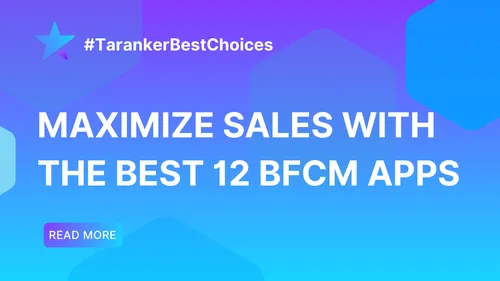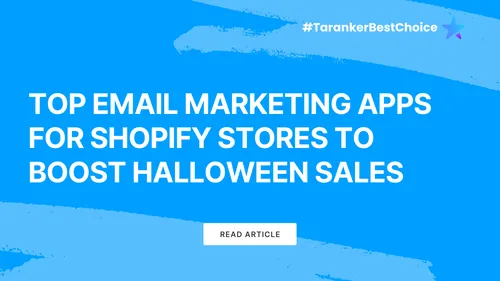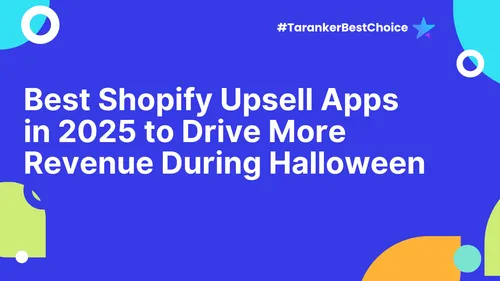Introduction
In the crowded and ever-competitive world of e-commerce, customer loyalty isn’t just about repeat purchases—it’s about creating lasting relationships that drive sustained growth. For Shopify merchants, understanding the psychology behind customer loyalty is the key to turning first-time buyers into long-term brand advocates.
Why do customers choose one brand over another, and more importantly, why do they come back? The answer lies in a mix of emotional triggers, cognitive biases, and well-crafted brand experiences. By decoding these psychological drivers, you can design better marketing, deliver smarter support, and build an ecosystem that customers are excited to return to again and again.
In this in-depth blog, we’ll explore:
✔ The core psychological principles that fuel customer loyalty
✔ How emotion and trust shape buying behavior
✔ The role of personalization, rewards, and habit formation
✔ Strategies to apply psychological insights to your Shopify store
✔ Real-world examples and tools to implement right away
1. Understanding the Emotional Basis of Loyalty
a) Trust Is the Foundation

Trust is the most fundamental element of customer loyalty. Without it, there is no long-term relationship. Customers need to believe that: ✔ Your products will deliver what they promise
✔ Your store is safe and secure to shop from
✔ You will resolve any issues fairly and promptly
📌 Example: Brands that provide transparent shipping policies, responsive customer support, and generous return policies build trust faster than those that hide behind fine print.
b) Emotional Connections Drive Repeat Purchases

Beyond functionality and price, people make purchases based on how a brand makes them feel. Emotional branding creates a stronger, more memorable bond with the customer.
✔ Do you make them feel inspired, appreciated, or part of a bigger mission?
✔ Do your visuals and messaging align with their identity or aspirations?
📌 Pro Tip: Use storytelling in your product descriptions, emails, and social content to forge emotional connections.
2. Cognitive Biases That Influence Customer Loyalty

a) The Endowment Effect
People tend to value things more highly when they feel a sense of ownership. When customers buy from your store, they begin to psychologically "own" your brand.
✔ Reinforce ownership through personalized post-purchase emails
✔ Use messaging like "Your style, your choice" or "Complete your collection"
b) The Consistency Principle
Psychologically, people want to act in ways that are consistent with their past behavior. If a customer has purchased from you once, they’re more likely to do it again—especially if the experience was positive.
✔ Reinforce their identity as a returning customer
✔ Send “Welcome back” emails or “Thanks for being a loyal customer” messages
c) Social Proof and the Bandwagon Effect
Customers are influenced by the behavior of others. Seeing that other people are buying, loving, and recommending your products increases their likelihood of staying loyal.
✔ Display customer reviews prominently
✔ Share UGC (user-generated content) across your channels
✔ Highlight “Most popular” or “Trending” items
📌 Tool Suggestion: Use apps like Loox, Judge.me, or Stamped.io to collect and display social proof.
3. The Role of Habit Formation in Loyalty
Loyalty is often less about brand worship and more about habit. The more a customer interacts with your store, the more likely it becomes a part of their routine.
a) Create Predictable Experiences
Consistency leads to habit. Make sure your: ✔ Website loads fast and is easy to navigate
✔ Product quality and service levels are reliable
✔ Checkout and shipping processes are smooth
b) Leverage the Power of Reminders
Strategic reminders can reinforce habitual buying behavior: ✔ Email campaigns that highlight replenishable or seasonal products
✔ SMS alerts about restocks or sales
✔ Retargeting ads that reignite interest
📌 Tools to Try: Klaviyo, Omnisend, Postscript
4. How Loyalty Programs Tap Into Psychological Triggers
Loyalty programs work so well because they engage multiple psychological drivers: ✔ Reciprocity – “You gave me points, I’ll give you my loyalty.”
✔ Scarcity – Limited-time rewards create urgency.
✔ Achievement – Tiered rewards systems provide a sense of progression and accomplishment.
📌 Top Apps for Shopify:
-
Smile.io – Gamified loyalty and referral programs
-
LoyaltyLion – Customizable programs with deep analytics
-
Yotpo Loyalty – Combines rewards with reviews and referrals
5. Personalization: Making Customers Feel Seen
People are more loyal to brands that "get them." Personalization creates relevance and fosters emotional resonance.
✔ Send emails with tailored product recommendations
✔ Address customers by name in communications
✔ Customize offers based on purchase history
📌 Pro Tip: Use segmentation tools in Klaviyo or Shopify Email to tailor experiences at scale.
6. Applying Psychological Strategies on Your Shopify Store
Here are ways to implement these principles effectively:
|
Psychological Principle |
Shopify Strategy Example |
|
Trust |
Use badges, reviews, clear policies |
|
Emotional connection |
Share your brand story, values, and mission |
|
Consistency |
Keep branding uniform across emails and site |
|
Endowment effect |
Let users "build their own bundle" or wishlist |
|
Social proof |
Display real-time purchases or customer photos |
|
Habit formation |
Offer subscriptions or membership clubs |
|
Scarcity/Urgency |
Highlight low-stock items or limited-time deals |
7. Real-World Examples of Psychological Loyalty
✔ Glossier: Appeals to emotions and identity with inclusive, community-driven messaging.
✔ Nike: Uses achievement and personal empowerment to keep customers engaged.
✔ Dollar Shave Club: Habit formation through monthly subscriptions and humorous, relatable communication.
These brands understand that loyalty isn’t bought—it’s earned through consistent, emotionally intelligent experiences.
Conclusion
Customer loyalty is deeply rooted in psychology. By understanding what drives people emotionally and cognitively, Shopify merchants can craft strategies that resonate, connect, and retain.
💡 Action Step: Review your current customer journey. Are you reinforcing trust, creating emotional connections, and using psychological triggers to your advantage? Start by optimizing one area—like your post-purchase flow or loyalty program—and expand from there.













